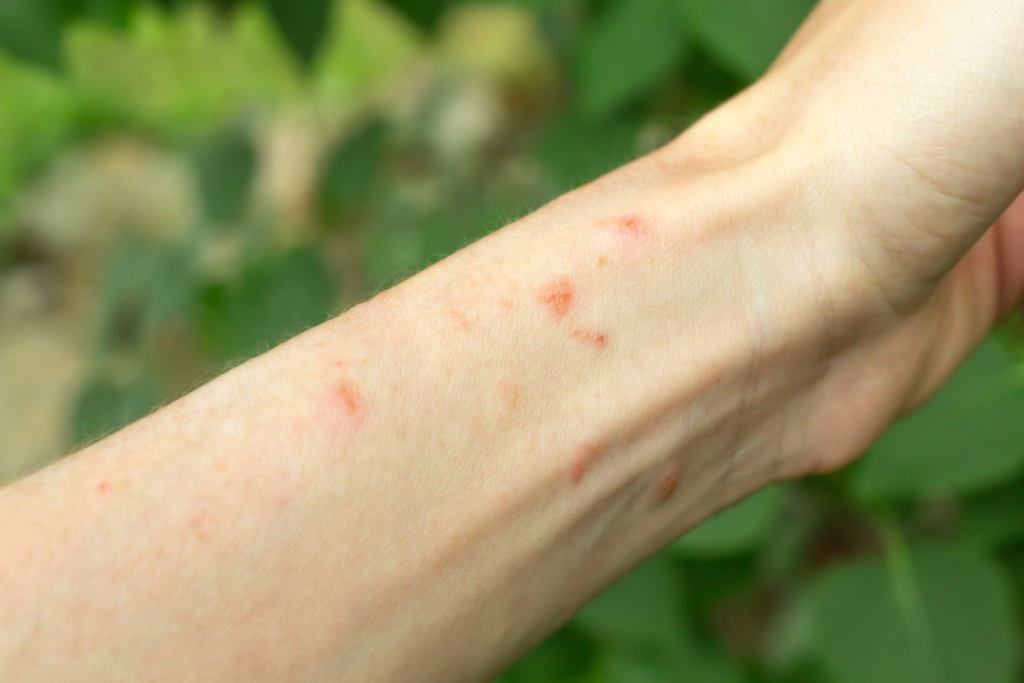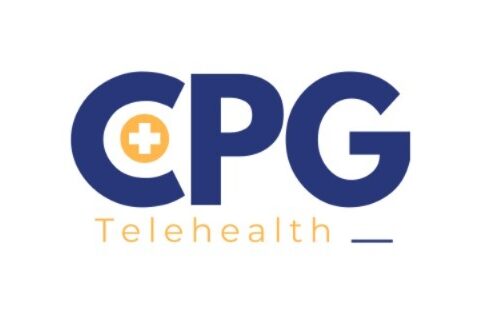Rash treatment: get relief fast with online medical care
If you need help diagnosing and treating your rash, our virtual appointments make it affordable and convenient to speak to a board-certified primary care doctor. Getting an accurate diagnosis and treatment for your skin issues from a medical professional can empower you to live comfortably and confidently.*
- Board-certified primary care doctor
- Available day or night in 50 states
- Same-day prescriptions available


What does a rash look like?
Whether a rash is itchy, burning, bumpy, inflamed or just unattractive, we all wish rashes would just disappear sooner than later. Fortunately, our caring online doctors are available 24/7 to help you treat a rash as soon as you need it. What is a rash, anyway?
In medical terms, a rash is a change in the color or texture of the skin. Many skin rashes may appear dry, itchy, painful, and bumpy. While rashes are commonly described as red, some may appear gray, purple, or white on darker skin tones. In general, they are a sign of irritation, infection, or underlying disease. Some common symptoms of skin rashes include:
Itchy skin
Raised red welts or small bumps
Leathery patches that are darker than usual (hyper-pigmented) on darker skin tones
Dry, cracked, scaly areas on lighter skin tones
Swelling, burning, or tenderness around the affected area
Various factors cause rashes, including irritants, allergens, infections, or underlying medical conditions. Many rashes are harmless and can be treated at home. If you have a persistent rash that worsens with time, however, consult one of our doctors for proper diagnosis and treatment.
Common rash causes
Skin rashes are often lumped together under the term dermatitis, which just means that your skin is inflamed and overreacting to irritation. Contact dermatitis can be caused by any number of things, such as:
Chemicals in rubber, latex, and elastic products
Cosmetics, soaps, and laundry detergents
Dyes and other chemicals in clothing
Poison ivy, poison oak, or sumac
Seborrheic dermatitis is a type that appears in flaky, greasy red and yellow patches around the face and can show up on the scalp. Mild seborrheic dermatitis is known as dandruff. It’s not known exactly what causes seborrheic dermatitis, but things that make it worse include:
High stress levels
Fatigue
Hot and cold extreme temperatures
Infrequent shampooing
Harsh soaps, lotions, and skincare products
Other common causes of a skin rash include eczema, psoriasis, impetigo, shingles, and common childhood illnesses. Different types of rashes have different causes.
How to treat rashes – prescription and OTC relief
While almost always uncomfortable, rashes come in many forms, ranging from mild irritations to potentially serious conditions.
Eczema
While eczema can show up in different ways, it’s generally defined as an itchy inflammation of the skin caused by allergic triggers. It often appears as thickened dark or red skin with scaling or cracking. It is particularly common in babies and children but can occur at any age.
Chronic skin conditions like eczema can cause lifelong intermittent rashes and discomfort. It’s an ongoing process to notice triggers that might flare up eczema symptoms, such as irritating body products, laundry detergent, outdoor allergens, or even foods that you eat.
Practical tips to help manage eczema include:
Identifying and avoiding triggers
Wearing loose cotton clothing
Keeping nails short to minimize damage from scratching
Your doctor can also help prescribe medication that will relieve symptoms and preventatively manage future flare ups.
Using moisturizers (emollients) daily helps to hydrate the skin and prevent dryness, in turn alleviating symptoms. Topical corticosteroid creams and ointments can also reduce inflammation, itchiness, and swelling.
Psoriasis
Psoriasis is a common autoimmune disorder often worsened by things like stress, skin injury, infections, and certain medications. Mild cases can usually be treated with a combination of topical corticosteroids and fragrance-free moisturizers.
Severe psoriasis requires a more in-depth treatment plan. Your doctor may recommend oral medication and lifestyle changes in addition to topical prescription and over the counter creams. Our board-certified primary care doctors may refer you to a dermatologist for in-person care of severe psoriasis.
Allergic rash
The best long-term solution for allergic rashes is to identify and avoid the allergen. An example of an allergic rash is the amoxicillin rash, characterized by pink or purple bumps on the skin. Over-the-counter oral antihistamines like loratadine and steroid creams like hydrocortisone relieve itching and inflammation. Moisturizing creams help keep the skin hydrated.
Home remedies such as staying hydrated and taking lukewarm oatmeal baths can help alleviate skin irritation. Topical hydrocortisone cream and oral antihistamines offer relief from itching and redness. If you have a persistent rash, it’s important to talk to a doctor to get a diagnosis and treatment plan.
Contact dermatitis
Treatment for mild contact dermatitis typically involves over-the-counter medications like hydrocortisone to alleviate symptoms, but more severe reactions may require prescription treatment.
Treatment begins with identifying and avoiding the allergen or irritant. Keeping the skin hydrated with moisturizers and using fragrance-free soap and warm water to cleanse the affected area can help alleviate symptoms. Over-the-counter mild steroids like hydrocortisone cream can provide relief from itching and inflammation. Additionally, barrier creams like petroleum jelly can protect the skin from further irritation.
For severe cases of contact dermatitis, you may need a topical or oral prescription medication to help get your symptoms under control.
Hives (urticaria)
How to treat hives depends on severity. Sudden flare-ups cases often resolve on their own with home remedies and staying away from triggers. Mild hives also generally clear up on their own. It can be helpful to wear lightweight, breathable clothing, use cold compresses and gentle non-fragrant aps. Avoiding irritating cosmetics, detergents and body care products.
Chronic hives may require over-the-counter antihistamines like loratadine along with self-care treatments such as cool compresses. If your hives are persistent, a doctor can help you with a treatment plan to get lasting relief.
Bacterial rash
Diaper rash and skin irritations
Diaper rash shows up as redness or irritation in the diaper area. Things like friction, prolonged exposure to moisture, diarrhea, allergies, or infection tend to make it worse. Once a rash shows up, it’s extra important to promptly change wet or soiled diapers, regularly ceanse the affected area with mild soap and water, and gently pat it dry. Applying diaper ointments or creams containing zinc oxide or petroleum can provide relief. Consider allowing diaper-free moments to promote drying of the affected area.
Ongoing diaper rash may indicate a yeast infection, characterized by a slightly raised, spreading red rash. Treatment involves using antifungal creams like clotrimazole or nystatin, along with attentive care.
If the rash persists despite treatment, consult a doctor. They may recommend stronger medications to help it clear up. For adult diaper rash, a similar approach is needed, including keeping the area clean and dry, along with the use of zinc oxide creams, petroleum jelly, and over-the-counter barrier creams to protect and soothe the skin.
Drool rash
To keep the affected area dry, use a clean tissue or an absorbent bib, and change them frequently. This helps prevent further irritation and promotes healing.
Heat rash (sweat rash, miliaria)
For heat rash relief, opt for lightweight, breathable clothing that promotes airflow and consider using fans or staying in air-conditioned environments. Taking a cold shower and allowing the body to air dry can also provide relief.
For adults on bedrest, frequently changing positions, clothing, and bedding helps prevent heat buildup and reduce the discomfort of a heat rash. Anti-itch creams like calamine can soothe itching, while medications like paracetamol may be helpful if a fever is contributing to sweating. Corticosteroid creams such as 1% hydrocortisone cream can reduce irritation and itching associated with heat rash.
Sunburn
If the sunburn is severe, talk to a doctor. They may prescribe stronger antihistamines, corticosteroids, or painkillers to provide relief from discomfort. Some common medications and OTC supplements may make your skin more sensitive to the sun.
Road rash
Always gently clean the wound to remove debris and prevent infection. Applying an antibiotic ointment aid in healing and reduces the risk of infection. Cover the wound with a sterile bandage, such as Tegaderm™, or gauze protects it from further harm. Be sure to monitor for signs of healing or infection.
Hot tub rash
Underarm rash
An underarm rash, often a result of blocked sweat ducts, can be managed with over-the-counter calamine lotion to ease itching and discomfort. Hydrocortisone cream is effective in reducing inflammation and promoting healing.
There are several types of rashes caused by viral infections. Some common viral rashes include:
Chickenpox
Shingles
Fifth disease
Hand, foot, and mouth · Measles
Scarlet fever
Viral rashes are typically managed through supportive care to alleviate symptoms and aid in recovery. Treatment may include:Symptom relief: Over-the-counter medications such as acetaminophen (Tylenol) or ibuprofen (Advil, Motrin) can help reduce fever and relieve discomfort associated with the rash.
Hydration: Encouraging adequate fluid intake helps prevent dehydration, especially in cases where fever is present.
Rest: Getting plenty of rest supports the body’s immune system in fighting off viral infection and promotes healing.
Skin care: Keeping the affected areas clean and dry can help prevent secondary bacterial infections and promote healing. Calamine lotion or oatmeal baths may provide relief from itching and discomfort.
Medical attention: In some cases, especially with more severe symptoms or complications, medical intervention may be necessary. Your healthcare provider can prescribe, antiviral medications or other treatments as needed.
If you suspect you or your child has a viral rash, it’s important to consult a healthcare professional for proper diagnosis and guidance on the best course of treatment.
Fungal rash
Insect bite reactions
Scabies and bed bug bites, as insect-like parasites, can also trigger similar skin reactions. Treatment typically involves prescription medications to get rid of the parasites and alleviate symptoms, along with environmental control measures to prevent re-infestation. Scabies rashes can frequently show up in between your fingers, and bed bug rashes are itchier at night and can show up
When to see a doctor in-person immediately for a rash
Your rash may be serious if it comes with any of the following signs or symptoms:
Increasing size, pain or discoloration of the rash despite treatment
Joint pain
Severe head or neck pain · A tight, itchy, or sore throat
Red streaks or tenderness
Difficulty breathing
Swelling in your face or limbs
A high fever
Confusion
Dizziness
Vomiting or diarrhea
A recent tick or animal bite
Your health and well-being are our top priority. Seek medical attention or call 911 immediately if you experience any of these severe symptoms with your rash.
Effective prescription rash cream
When you have a rash, you want relief quickly. Our qualified online doctors are available for same-day appointments to diagnose your rash and prescribe the best skin treatments to get relief quickly or guide you to the best in-person providers should direct treatment not be safe or effective.
Corticosteroids
Antibiotic topical treatments
Calcineurin inhibitors
Phosphodiesterase-4 (PDE4) Inhibitors
Phosphodiesterase-4 (PDE4) inhibitors work by reducing inflammation and itching associated with certain types of rashes.

Online healthcare for rash diagnosis and treatment
Many of us struggle to go to the doctor even for annual check-ups. When you or someone you love is suffering from a frustrating and painful skin condition, the last thing you want is to spend hours trying to get a doctor appointment or risking getting sick in an urgent care center.
While most rashes aren’t dangerous, it’s still important to get them checked by a doctor and to get a healing treatment plan. Our board-certified doctors are experienced in all kinds of primary care treatment, including all common skin conditions
